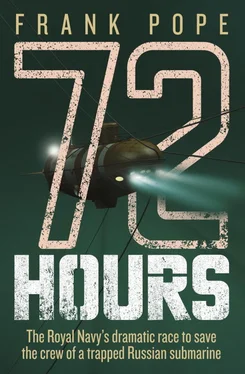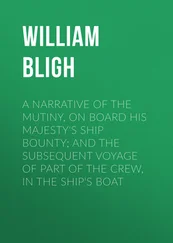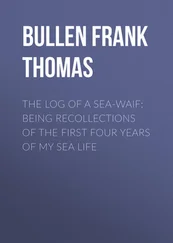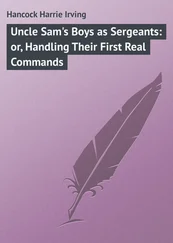Saturday, 6 August/Sunday, 7 August
SS + 60 h 40 mins
17.10 UK – 20.10 Moscow – 05.10 Kamchatka
Georgy Kozmin mooring
Just past five o’clock in the morning, more than an hour after KIL-27 had left the dockside, the trucks carrying the US Super-Scorpios finally arrived at the dockside. Commander Kent Van Horn looked longingly at the crane and wished it would immediately swing into action, but instead was drawn into protracted discussions with the ship’s Master, Captain Novikov.
One of the pack of journalists that had been sniffing outside the gates of the port, Oleg Kashin, had managed to slip inside and got talking to Andrev Yuryevich, the second assistant to Captain Novikov. Yuryevich was dismissive of the US Navy’s efficiency. ‘The Americans were late, they were,’ he said. But when he realised that Kashin was a journalist, he changed his tune. ‘No help can be unnecessary,’ he oiled. ‘It is indeed a military fraternity…’
Meanwhile, the dark shape of a new ship, bristling with antennae, had appeared in the harbour. Fraternity or not, the presence of the Americans was evidently still suspicious enough to warrant a dedicated surveillance vessel.
With two C17s and the enormous C5 on the ground, Van Horn was becoming increasingly suspicious that the Russians were trying to obstruct them. Forty minutes ago – at 04.30 local time – an order had been received from a Russian Admiral to stop offloading the ADS suits. Van Horn wasn’t too worried about the bulky atmospheric diving suits: the helicopters needed to transport them to the ships on station had not materialised, making them useless. In any case, it now seemed that none of the vessels had enough clear deckspace to take a helicopter delivery.
But it did bother him that his Super-Scorpios had been halted at the same time. The trucks had rolled up to the airport gates only to be told that they should go back to their aircraft and wait. The British team were already on their way to the accident site, the official had said, and American assistance would not be required.
Other than continuing to talk and calling their superiors to complain about the obstructions, there was nothing Van Horn or his team could do. Half an hour later, they’d been given permission to continue, only to run into more delays in getting the vehicles to the dockside. In their rescue projections they’d estimated a Time To First Rescue of 07.10, but after an hour’s discussion with Captain Novikov it was close to 06.30 and they hadn’t even started loading the ship yet, let alone found themselves steaming towards the incident site.
Now that he was at the dockside, it was obvious that loading was not going to be straightforward. With the vessel moored with her stern to the jetty and no crane available on the bank, they would be relying on the floating crane that had been provided. While up against the shore the crane’s arm could reach their equipment but was unable to reach the deck where it was to be installed. To get their gear in the right place, they would first have to lift it on to the platform carrying the crane, move the barge that the crane was mounted on further towards the ship’s stern, then lift the gear on board. It would at least double the time it should have taken them to load.
When the sequence of lifts and set-downs had finally been established, the crane started moving – just. Like the crane serving the UK’s ship, the floating crane serving the US ship had two speeds, but in this case they were slow and excruciatingly slow. It would eventually take the team between three and four hours to load their equipment on to the crane’s apron, another hour to move the crane into its new position, and another three to four hours to load it on to the ship. And while some of the port crew seemed to be anxious to move things faster, the majority seemed completely unconcerned by the slow pace of their progress.
Other elements of the large-scale American effort were also falling away. Another C17 containing a Deep Drone ROV system was supposed to land at Elizovo at 06.55 local time, but was stuck on weather-hold at Anchorage, Alaska, instead. With the ILS at Elizovo airport down, they had to wait for the weather to clear enough to ensure a safe landing. The bad weather and low cloud that had threatened to repulse the British rescue effort had finally arrived, closing the airfield to landings. The RAF C17 had squeezed in just in time.
During the glacial loading of their equipment, the US team on board the Georgy Kozmin soon came across the British-built Venom ROV that Captain Novikov had initially deployed to try to free AS-28 . As part of his team, Commander Van Horn had brought two specialist ROV technicians from the civilian marine technology firm, Oceaneering. They inspected the stricken robot and found the umbilical cable had been badly mangled – apparently by its own thrusters – but otherwise the unit was pretty new and in good shape. They had all their tools and reported that they could swiftly effect a professional repair job; since there was nothing else for them to be doing, they would have been glad of the occupation. Their offer was sharply declined.
Van Horn was now fuming. It was nonsensical. This was an emergency situation. If the technicians had managed to get a fix with the Venom ROV, he had pilots able to operate it. The Kozmin could have sailed with that, rather than waiting at least seven hours for the ancient crane to load the Super-Scorpios. The Australian ship from Shell Exploration had reported that it would not reach the site until 08.00 on Monday morning, and given the problems the British were reporting, backup was now vital. But for all his efforts, Van Horn’s explanations, demands and pleas fell on deaf ears. He was beginning to appreciate just how deeply Russian culture had excised original thinking. There was no reward for coming up with solutions or thinking outside the box, just punishment for not doing exactly what you had been told.
Commander Bill Hamblett had been passing the time on the ship watching the Russian officers. He’d noticed that Captain Novikov was often accompanied by senior Russian Naval staff. He didn’t look happy, and from the scraps of conversation that he’d managed to overhear it seemed the commander of the Georgy Kozmin was already being dressed down for his part in the accident – for deploying AS-28 without means to rescue her if there was a problem, and for allowing a non-qualified person to use the Venom ROV and destroy it in the process. Hamblett got the distinct impression that the officers were there to relieve Novikov of his command once the Americans had left the ship. He was also getting a strong feeling that the Russian officers didn’t want the Americans involved in the rescue, nor for Novikov to have any chance of playing a part in a successful outcome.
Saturday, 6 August/Sunday, 7 August
SS + 63 h 30 mins
20.00 UK – 23.00 Moscow – 08.00 Kamchatka
KIL-27 , Berezovya Bay, 52°18´N, 158°43´E
After five hours of steaming, an hour ahead of the Master’s estimate, a flotilla of grey, military vessels and shambolic-looking civilian ships and tugs appeared on the horizon ahead of KIL-27 , marking the vessel’s arrival above the huge hydrophone array and the submersible it had ensnared.
Gold glanced up to see the assembled fleet. Scorpio lay in pieces in front of him, both pods stripped out, and his team were still running through the mazes of connections and circuit boards with manuals propped open in front of them. They were closing in on the rescue site, and still they didn’t have a functional rescue vehicle. Time was running out.
Читать дальше












